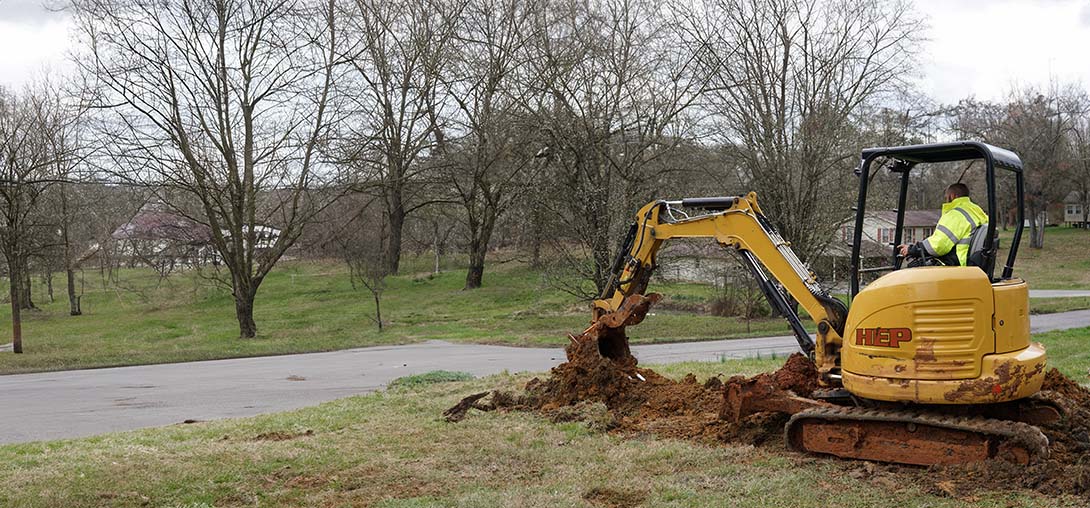- HEP
- Clogged Drains

 Clogged Drains
Clogged Drains
Clogged Drains | Main Line Issues | Plumbing | Sunbright
When a single sink slows down, it’s annoying; when the whole house backs up, it’s an emergency. HEP’s licensed plumbers know the difference lies in what’s happening beneath your Sunbright property—deep in the pipes where roots, scale, and sediment trigger stubborn clogs and bigger main line issues. Armed with high-definition sewer cameras and powerful hydro-jetting rigs, our team pinpoints the blockage fast, explains your options in plain language, and clears the line without tearing up your yard.
Sunbright homeowners trust us for 24/7 response, upfront pricing, and a Done-Right Guarantee that keeps stress levels as clear as your newly restored drains. Whether you’ve noticed gurgling toilets, foul odors, or mysterious puddles in the yard, let HEP handle the dirty work so you can get back to living clean and worry-free.
FAQs
What are the most common warning signs that my main sewer line is clogged?
Typical red flags include multiple fixtures backing up at the same time (for example, a toilet gurgling when the washing machine drains), water pooling around a basement floor drain, foul sewer odors inside or outside, and slow-moving drains throughout the house. If you notice any of these in your Sunbright home, the issue is likely in the main line rather than an individual branch line.
What usually causes main line blockages in Sunbright homes?
The leading culprits are intrusive tree roots attracted to the moisture in clay or cast-iron pipes, a buildup of grease and food scraps from kitchen sinks, flushed wipes or hygiene products that do not disintegrate, and pipe bellies or cracks that let soil and debris enter. In older Sunbright neighborhoods, original clay or Orangeburg piping is especially vulnerable to collapse and root penetration.
How will your technicians diagnose and locate a main sewer line clog?
We begin with a visual assessment of fixtures, then run a professional auger to determine the level of resistance. The next step is a high-resolution sewer camera inspection that shows the exact location, depth, and cause of the obstruction. Our cameras record video and transmit a signal to a surface locator so we can mark the pipe’s path and depth for precise repair planning.
Will over-the-counter chemical drain cleaners clear a main line clog?
No. Chemical cleaners are designed for small buildups in sink or tub traps, not for heavy obstructions 3–4" in diameter that sit 20–80 feet from your home. Harsh chemicals can also corrode older metal pipes and kill the beneficial bacteria in your septic system. A main line clog requires mechanical clearing—either power rodding or hydro-jetting—performed by a licensed plumber.
What methods do you use to clear main line blockages and how long does the service take?
For soft obstructions like paper or grease, we typically start with power rodding: a heavy-duty cable with a cutting head that scrapes the pipe walls. For tougher root intrusions or hardened scale, we use hydro-jetting, which blasts 3,500–4,000 psi water in a 360-degree pattern to scour the pipe clean. Most jobs take 1–2 hours, but severe root masses or collapsed lines may require partial pipe replacement, which can extend the project by a day.
How can I prevent future clogs in my main sewer line?
Schedule a preventive hydro-jetting service every 18–24 months if you have mature trees near the sewer path. Avoid flushing wipes, paper towels, or hygiene products. Install a lint trap on your washing machine hose, and dispose of cooking grease in a container instead of the sink. If your home has older clay or Orangeburg pipe, consider trenchless pipe lining or replacement before a collapse occurs. Regular camera inspections after major storms can also identify developing issues early.